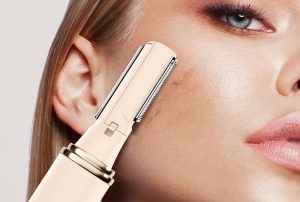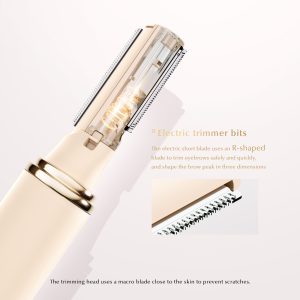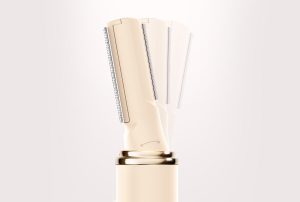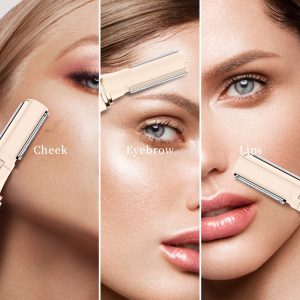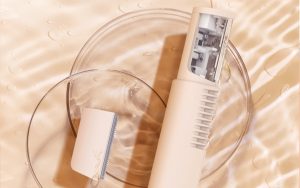Whether you’ve ever thought about using facial hair removers, or are currently using them to remove peach fuzz or more noticeable facial hair, there are a few things you need to know!
Question 1: How Does a Facial Hair Remover Work?
Facial hair removers typically use one of two methods: either a rotating blade or a gentle tweezing mechanism. These shavers are designed to quickly and efficiently remove unwanted facial hair.
Most models work by using small, rotating heads or oscillating parts that grab and remove hair without pulling on the skin. This means it’s a much gentler method compared to traditional tweezing or waxing. And because it works at the root, your skin will stay smoother for longer!
Question 2: Is a Facial Hair Remover Safe for Sensitive Skin?
The good news is that most modern epilators for face are designed with sensitive skin in mind. They often come with multiple settings, including a gentler mode, so you can tailor the treatment to your skin’s needs.
However, if you have extremely sensitive skin or conditions like eczema or rosacea, it’s always a good idea to test the device on a small patch of skin first. If irritation occurs, discontinue use. But for most people, facial hair removers are a safe and effective tool, even for those with more delicate skin.
Question 3: Does Using a Facial Hair Remover Cause Hair to Grow Back Thicker?
No, it won’t! This is a huge misconception!

Facial hair removers don’t affect the hair follicles in a way that would make the hair grow back thicker. When you use a device that removes hair from the root, the hair may feel a bit coarser when it grows back because the ends are no longer tapered, but it will grow back at the same rate and thickness. So, no worries there!
Question 4: How Often Should I Use a Facial Hair Remover?
You can use it as often as you need! In general, for most people, facial hair will start to grow back in about 1-2 weeks, so you can use the device every 1-2 weeks depending on how fast your hair grows.
However, it’s important not to overdo it, especially if you have sensitive skin. Giving your skin time to rest between sessions will help keep it looking smooth and healthy. And don’t forget to clean your device after each use for optimal performance!
Question 5: Can I Use a Facial Hair Remover on My Entire Face?
Yes, absolutely! These devices are designed to be safe for most areas of the face, including the upper lip, chin, and jawline.
Some people also use it on their eyebrows to tidy up stray hairs, but make sure to be extra cautious around sensitive areas like the eyebrows and under the eyes. I recommend using a smaller device or attachment for these areas to avoid over-precision. As always, take it slow, especially on the delicate skin around your eyes.
Question 6: What’s the Best Way to Prepare My Skin Before Using a Facial Hair Remover?
Before you start, make sure your skin is clean and dry. Washing your face with a gentle cleanser will remove any dirt, oil, or makeup that might interfere with the device’s performance.
After cleansing, make sure your skin is completely dry. If it’s damp, the device may not work as effectively. For some models, you can also apply a gentle toner to prep the skin, as long as it’s alcohol-free, to avoid irritation.
Question 7: How Do I Clean and Maintain My Facial Hair Remover?
Most facial hair removers come with a cleaning brush or are washable. Here’s how to do it:
- Turn off and unplug the device (if applicable).
- Remove any hair from the head or blades.
- Use the provided brush to gently clean the device.
- If it’s waterproof, you can rinse it under warm water. Just make sure it’s fully dry before storing it.
Question 8: What Should I Do if I Experience Skin Irritation?
First, don’t panic. Some mild redness after using a facial hair remover is normal, especially if your skin is sensitive.
If irritation persists, try using a soothing gel like aloe vera or a hydrating moisturizer after use. Avoid using the device on broken or irritated skin. And if irritation continues, it might be best to give your skin a break and consult a dermatologist.
Also, when choosing a facial hair remover, consider the size and design. If you’re looking for something portable and easy to use, go for a compact model. For more precise removal, consider one with smaller heads or attachments. If you have any more questions, please ask them in the form below.

